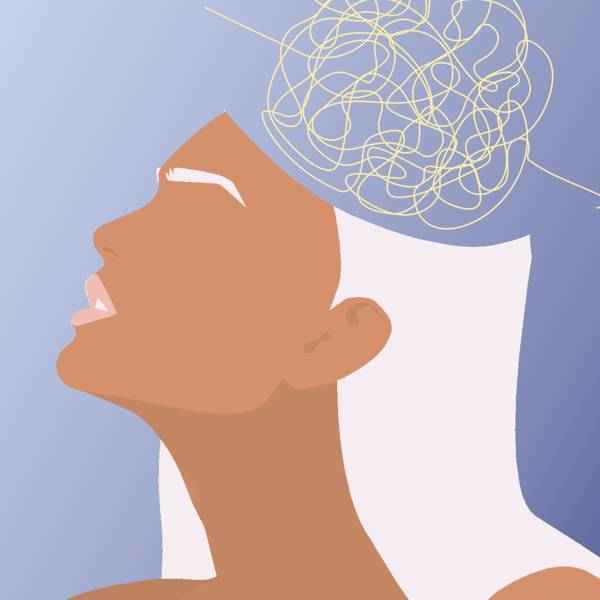Nature Knows and Psionic Success
God provides
Calotropis gigantea promotes the formation of synapses and neurites in the hippocampus

( Natural News ) Researchers from Dongguk University Graduate School of Medicine and Pukyong National University in South Korea investigated the neuromodulatory effects of ethanol extracts obtained from the leaves of Calotropis gigantea , a plant with a long history of use in traditional medicine. The results of their study were published in The American Journal of Chinese Medicine . C. gigantea , commonly known as milkweed or crown flower, is a large shrub that grows in temperate regions of Asia, including China, Bangladesh, and India. For their study, the researchers obtained extracts from C. gigantea leaves (CGE) and evaluated their effects during synaptogenesis in the late stages of neural development and during early stage neuritogenesis using rat hippocampal neurons. The researchers reported that CGE at a concentration of 7.5 ug/ml facilitated the early development of cytoarchitecture, as evidenced by increases in morphometric parameters, such as the numbers, lengths, and number of branches of initial neurites, axon, and dendrites. Through immunocytochemistry, they found that CGE upregulated synaptic vesicle 2 (SV2, a marker of axon terminals) and postsynaptic density-95 (PSD-95, a postsynaptic marker) and their colocalization during the synaptogenic stage (DIV 14). CGE also upregulated nerve growth factor (NGF) and activated extracellular signal-regulated kinase 1/2 (Erk1/2), which is blocked by a TrkA-specific inhibitor. This activity suggested that the neuritogenic and synaptogenic potential of CGE is due to its ability to activate NGF-TrkA-Erk1/2 signaling. When researchers analyzed CGE using ultra performance liquid chromatography, they did not detect stigmasterol, an active component of C. gigantea . Despite this, chloroform-methanol and ethyl acetate subfractions of CGE exhibited initial neuritogenic activity, suggesting that the neurotrophic-mimetic properties of CGE are due to multiple active components. Based on these results, the researchers concluded that CGE has neuromodulatory activity and contains as yet unidentified active phytochemicals with […]
Products that Enhance Cognitive Function and Reduce Stress
A Brief History On May 22, 1990, U.S. Patent 4,927,855 was issued to Laboratoire L. Lafon, covering the chemical compound modafinil, a medication to treat sleepiness due to narcolepsy, shift work sleep disorder, or obstructive sleep apnea. Most people focus a lot on their physical health and forget about the mental health. This approach is one wrong move and that is why you find so many people today, having mental issues due stress and pressure from work. One thing you need to know is that your mental health is as important as your physical health. In fact, it is more crucial because your brain is the center of everything. One surprising fact is that in your early 20s the brain may start to show cognitive decline. Therefore, you need to practice standard health behaviors such as not smoking, getting physical activity regularly, as well as eating a balanced diet to help curb this issue. There are also products that can help enhance cognitive function and reduce stress. There are various places where you can get insights and detailed information about the products that enhance cognitive function and reduce stress. You need to get information from reliable sources to avoid buying ineffective products. Here, we discuss some of these products to help you learn more about them. Digging Deeper Modvigil According to https://rupharma.com , Modvigil is one of the products that can help enhance cognitive function and reduce stress. Modvigil is the generic version of Modafinil and doctors prescribe it to shift workers, or people with narcolepsy and ADD/ADHD to help them manage sleep disturbances. Modvigil is also quite popular among students, business owners, and creative professionals as it helps them increase productivity and focus. For this reason, it is referred to as the “study drug”. The difference between Modvigil […]
Five Natural Remedies For Hormonal Imbalance – Family – Nairaland
FIVE NATURAL REMEDIES FOR HORMONAL IMBALANCE Whether it is infertility, depression, weight gain, or a variety of other health challenges, the root of most conditions is hormone imbalance. Hormones enable different parts of the body to communicate and control most major bodily functions. The body produces hormones to serve as the body’s messengers to assist in the function and regulation of the body’s digestion, regulating your metabolism and whether or not you have mood swings; they are also in charge of regulating breathing, sleep, movement, reproduction, stress, growth etc. There are many hormones at work in the body, but let’s focus on the female sex hormones, estrogen, progesterone, and testosterone. To better understand hormone imbalance, let’s first look at the general function of these sex hormones. Estrogen stimulates the growth of tissue, such as development of breast and reproductive organs, and ensures their function. In the brain, it boosts the synthesis and function of neurotransmitters that affect sleep, mood, memory, libido, and cognitive factors such as learning and attention span. Progesterone is made primarily by the ovaries. The adrenal glands, peripheral nerves, and brain cells produce lesser amounts. Progesterone ensures the development and function of the breasts and female reproductive tract. In the brain, progesterone binds to certain receptors to exert a calming, sedating effect. It improves sleep and protects against seizures. Testosterone is manufactured in women by the ovaries and adrenal glands and enhances libido and sexual response. It strengthens ligaments, builds muscle and bone, assists brain function, and is associated with assertive behavior and a sense of well-being. Though testosterone does play a role in the balance of sex hormones, the main culprits when it comes to imbalance are progesterone and estrogen. There are many causes of hormone imbalance, but at the base of the problem is […]
Brain science and technology: initiatives in the Shanghai and Yangtze River Delta region

With hundreds of billions of neurons and tens of billions of synaptic connections, the human brain is considered one of the most complex biological systems in the natural world. It is the basis of human perception and intelligence. Research on the brain, including its structure and function, sits at the forefront of scientific and technological exploration. With the new generation of artificial intelligence (AI) technology, industrial demands are driving further exploration of the human brain’s cognitive neural mechanisms, and its integration with brain-inspired intelligence technologies — intelligent technologies with development inspired by brain and neuroscience principles. Many nations, including the United States, European Union and Japan, have launched brain research programmes. Billions of dollars of investment globally have led to hundreds of publications reporting breakthroughs in brain cell typing, neural circuit analysis, neural activity recording, brain function intervention, theoretical and data analysis tools, human neurobiology and cross-integration technologies. However, gaps remain in understanding, from cognitive function to ageing and pathology. Further breakthroughs in brain-inspired computing systems and devices will require a deeper understanding of the neural mechanisms of the brain. China announced in 2016 the launch of its Brain Science and Brain-Inspired Intelligence Project to explore the neurological basis of human cognition, while informing the treatment of brain diseases and advancing brain-inspired intelligence and computing technologies. Cities like Shanghai soon started investing in brain-inspired intelligence research to support the development of relevant industries. The Institute of Brain-Intelligence Technology (BIT) was established at the Zhangjiang Lab, built in Pudong’s Zhangjiang Science City, in 2017, to promote interdisciplinary research on life science and information technology, positioning Shanghai as a globally influential science and technology innovation centre. The Shanghai Municipal Government established the Shanghai Research Center for Brain Science and Brain-Inspired Intelligence (Shanghai Brain/AI Center) in 2018 ( Fig. 1 ). As […]
These clever brain pills will help you sleep like a baby through this heatwave

Unless you’ve been hiding under a rock, you’ve probably heard of ‘smart drugs’, ‘brain enhancers’ or ‘nootropics’ ; think of Bradley Cooper in the film Limitless. "Nootropics are a broad category of cognitive-enhancing supplements which include a range of compounds to improve memory, focus, creativity, and motivation. The rough translation of ‘nootropic’ comes from the Greek for “to bend or shape the mind,” say the experts at BrainExcell. From Silicon Valley entrepreneurs to competitive athletes, nootropics are hitting the mainstream, but did you know they can also enhance our sleep? Natalia Bojanic, Mindfulness Expert & Co-Founder of Form Nutrition, said: “Sleeping is an invaluable activity for human beings, owing to its impacts upon our mental, emotional and physical wellbeing. This is easily demonstrated in the absence of sleep, at which point mental health issues surface, emotional irritability increases, and the immune system significantly underperforms. Conversely, adequate sleep is attributed with promoting cardiovascular health, lowering blood pressure and balancing insulin levels. It is then no surprise that the World Health Organisation recommends at least 8 hours of sleep each night.” Natalia believes that popping nootropics could actually help boost sleep and enhance alertness – especially in this horribly muggy weather, naturally. Natalia maintains that taking a nootropic when you wake up will stop you from feeling exhausted when waking up in the heat. "form’s Boost is a nootropic centred around the innovative and synergistic pairing of Caffeine, perhaps the world’s best-known stimulant, with the calming amino acid L-Theanine. It’s like a strong cup of coffee without the jitters. Interestingly, the combination occurs naturally in matcha green tea so perhaps no surprise that was the drink of the Samurais before battle, she explains. "Multiple studies have shown this balanced combination can significantly improve attention and alertness and even reduce the negative […]
5 Ways Outdoor Learning Can Teach Resilience
When our parents used to tell us to “Get outside and play,” they were onto something. Outdoor learning offers a wealth of benefits to kids’ bodies and minds. What happens to your body and mind when you escape the office and step outdoors? It’s likely that you find yourself growing calmer, more relaxed, and more focused. It’s no different for children. Outdoor learning can not only teach kids resilience, but it can help them develop a myriad of other important life skills, too. Here’s how getting your children outside can help make them stronger for the rest of their lives. Nature can reduce the impact of stress. Being exposed to a natural setting can have a powerful effect on the emotional and cognitive functioning of a child. Children who grow up among greenery have a lower risk of mood disorders and substance abuse (Engemann et al 2019) – even children who have experienced life stressors like bullying or other forms of anxiety. Why? Nature helps to build self-confidence and self-efficacy. It also reduces cortisol levels. A study published in the International Journal of Environmental Research and Public Health revealed that the daily levels of the stress hormone cortisol were consistent and healthy among children who were given access to an outdoor education. Those who were kept indoors, on the other hand, had much higher levels of stress. Watching a plant grow teaches patience and improves academic performance. There’s a reason why so many elementary school classrooms teach students how to grow bean or tomato plants. Planting a seed not only shows a child the value of life, but it helps teach patience and the importance of caring for something else. This has a major impact on a student’s learning. That impact extends long beyond the initial experience. Outdoor learning, […]
Advantages and Disadvantages of Memory Foam Mattress

Are you planning to get a memory foam mattress or any alternative product? There are only a few things that can make us feel good just like a good night’s sleep. Not to mention if sleep is playing hard to get with you every night. But since you’re here, we’re guessing that you’ve already heard about memory foam before and wonder about its effects. Will it improve your sleep every night? We’ll find out about that later. Some people who already tried sleeping on one swear by it while some aren’t convinced. What does memory foam even mean? What are the pros and cons of using it? Read on to answer these questions. What is Memory Foam? The first memory foam was first used during the mid-1960s for NASA’s airplane seats. It is made from the viscoelastic substance which is soft and highly energy absorbent. Thus, it can mold to the body as its way to respond to heat and pressure while distributing weight equally. Then, it returns to its original shape once the pressure on it is gone. To protect astronauts from high impacts while traveling into space, it also has additional properties to make it more comfortable. Thus, memory foam made a booming debut in the market as a new material in various forms after its NASA “virgin flight”. For instance, it was used as the cushioning material in different shoes and helmets. Medicine also made it more relevant as they found it useful in prosthetics and other products. This refers to those that can prevent pressure ulcers like seating pads that people who are severely disabled can use. Now, memory foam is used in pillows, mattress pads, and of course, mattresses in various depths and densities. Advantages of Memory Foam Do you think the special properties […]
Social media companies are outsourcing their dirty work to the Philippines. A generation of workers is paying the price.

John W. Tomac for The Washington Post (John W. Tomac/For The Washington Post) MANILA — A year after quitting his job reviewing some of the most gruesome content the Internet has to offer, Lester prays every week that the images he saw can be erased from his mind. First as a contractor for YouTube and then for Twitter, he worked on a high-up floor of a mall in this traffic-clogged Asian capital, where he spent up to nine hours each day weighing questions about the details in those images. He made decisions about whether a child’s genitals were being touched accidentally or on purpose, or whether a knife slashing someone’s neck depicted a real-life killing — and if such content should be allowed online. He’s still haunted by what he saw. Today, entering a tall building triggers flashbacks to the suicides he reviewed, causing him to entertain the possibility of jumping. At night, he Googles footage of bestiality and incest — material he was never exposed to before but now is ashamed that he is drawn to. For the last year, he has visited a mall chapel every week, where he works with a church brother to ask God to “white out” those images from his memory. “I know it’s not normal, but now everything is normalized,” said the 33-year-old, using only his first name because of a confidentiality agreement he signed when he took the job. Workers such as Lester are on the front lines of the never-ending battle to keep the Internet safe. But thousands of miles separate the Philippines and Silicon Valley, rendering these workers vulnerable to exploitation by some of the world’s tech giants. In the last couple of years, social media companies have created tens of thousands of jobs around the world to vet […]
India- iMoblife Inc. Announces Brainspace App for Brainwave Entrainment, Meditation, and Improved Mental Health
(MENAFN – GetNews) To achieve full capacity a human must be in the right shape of mind. Brainspace App offers powerful music and sound for meditation and entrainment like no other applications Gurnee, US – Every human being on earth has the capacity to achieve greatness in their chosen endeavor. However, so many factors in the environment and lack of space to explore new ideas is delaying the progress of many. iMobLife Inc. is proud to announce its Brainspace App for Brainwave Entrainment & Meditation. The app comes with top quality isochronic tones, binaural beats, and soothing nature sounds. Users will also have exclusive access to over 400 programs that can improve relaxation, sleep, spirit, meditation, anxiety, stress relief, positive mind, confidence, focus, memory, etc. It offers a pure, safe, and effective way to improve the mind and live a better and happier life. To download the app, please visit theGoogle Play Store . Most people in the world are going through one form of challenge or the other in their lives. These are part of the human experience so, they are natural and normal. However, these challenges can sometimes become overwhelming, thereby leading to the production of negative energy that can cause serious mental issues. Brainspace App offers a huge opportunity for everyone to discover themselves, relax, and live a better life. Since it’s an app on a smartphone, access and utilization are immediate and instant. Many cool features are included in the app, which has contributed to its efficiency, accuracy, and effectiveness. Some of the features include: – Brand New UI design – 400+ professional recordings bring you to altered state of mind – Free sample of each recording – Subscription & Individual Purchase options for your choice – Get three tracks for free permanently Brainspace is […]
Why Do Some People Always Remember Their Dreams, While Others Almost Never Do?

Much of dreaming remains a mystery, but scientists have some ideas as to why some people are better than others at remembering their dreams. Soaring with the birds. Teeth falling out. A crazy psychopath is chasing you. For many of us, our dreams transport us to a surreal world where logic and reason have no reign. Some of us may even look forward to sleep – and the adventures we’ll go on in our dreams. But does everyone take a nightly trip to dreamland? While most of us remember somewhere around one or two dreams a week, some people report a subconscious experience that’s more like a blank tape. Among us are people who say they never, ever dream. A small subset of the population – around one in every 250 people – report never remembering a single dream in their lives, as a 2015 study found. What is it about people who don’t remember their dreams that sets them apart from the people that do? Is it possible for the brain to stop producing dreams? And could something be wrong in the brains of people who report never dreaming? Raphael Vallat, a neuroscientist specializing in sleep and dream research at the University of California, Berkeley Sleep and Neuroimaging Lab, offered insights to a number of these questions. Vallat says dreaming “is one of the last frontiers in our understanding of the human mind.” And learning about dream recall – the why and how of remembering one’s dreams – may help scientists solve some of the mysteries of the dreaming mind. Work by Vallat and others in the field has uncovered a number of interesting tidbits that seem to separate the dreamers from the so-called nondreamers, or the people seldom or never remember their dreams. Is Dreaming a Universal […]
What Fruits and Vegetables Are Safe for Dogs?

Have you ever perused the produce section of your grocery store and marveled at the display of fresh strawberries in the middle of winter? Or wondered how dozens of apple varieties are available all year round? Welcome to the transportation age, where fruits and vegetables grown halfway around the country — or the world — can wind up in our stores and on our plates any time of year. Sure, it’s convenient, but at a cost: higher prices, loss of freshness, decreased nutrients and unwanted chemicals, to name a few. The apples in your store’s produce section could be a year old and treated with fungicides and a chemical called 1-methylcyclopropene (1-MCP) to slow down the natural ripening process. So, how do savvy shoppers snag the freshest, healthiest fruits and veggies? They buy seasonally! Purchasing local produce grown in-season has tons of benefits: It’s typically less expensive because you’re not funding a long trek from farm to store; it’s fresher, which means packed with more nutrients; and it’s less likely to be sprayed with pesticides or coated with other chemicals. You can also feel good knowing that when you buy seasonally, you’re supporting local farmers. Score! But wait. What’s all this got to do with your dog? Fido and Fluffy can reap the health benefits of in-season produce, too! Here are my top seven produce picks you, and your dog, can enjoy right now. Apples Apples can help protect your dogs heart! Photography by: ©All Produce | Getty Images Ditch the 1-MCP and opt for orchard-fresh apples bursting with polyphenols that defend the body against oxidation from dangerous free radicals. Apples help regulate blood sugar, protect the heart, benefit neurological health and provide anti-cancer benefits. They may even boost memory and help protect against neurodegenerative brain disorders, such as […]
How To Stop Smoking For Real – Crime – Nairaland
Men Accused Of Smoking Outside Their House, Harassed By Some Policemen / OAU Student Injures Friend With Stone For Advising Her To Stop Smoking (Photos) / Man Catches Fire While Smoking At A Gas Station In Cambodia (Graphics Photos) (2) (3) (4) Marijuana Rehab How To Quit Smoking Weed How to Stop Smoking Pot: Tips, Treatment, and Benefits Despite controversies regarding marijuana’s recreational and medicinal uses, the drug remains incredibly popular. It is abundantly represented in popular culture, and many state and local governments have rolled back criminalization laws on the sale and use of the drug. However, marijuana is nonetheless a drug, and one that causes problems if used excessively. Quitting smoking is not easy, but it is possible with treatment; the following tips will explain how and the benefits will explain why. How Does Marijuana Change the Brain? cannabis weed, a joint in his hands A man smokes . Smoke on a black background. The best way to start the process of kicking the habit is by understanding what marijuana does to the brain and why walking away from a joint requires effort and persistence. Tetrahydrocannabinol (THC), the active chemical compound in cannabis, influences brain functioning by forcing the brain’s natural cannabinoid receptors into action beyond natural parameters. This is what causes the high that someone gets after smoking marijuana or eating an edible product. The sensations are pleasurable; users report experiencing greater sensory perception; colors are brighter, music sounds better, food is tastier, etc. Many use marijuana to relax and overcome social anxiety. The helpless giggles and laughing fits are other perks. Fun as these effects may be, they can be addictive. A user who smokes every day, or who has been smoking for a long period of time, will have a harder time simply saying […]
Why Getting A Good Night’s Sleep Is More Important Than Ever

Golbal wakefulness is described as “the greatest public health challenge we face in the 21st century”. Photo / Getty Images It’s about the size of a large freezer, just tall enough for me to sit up in comfortably. I hit a button and the door slides to a close. On the wall ahead, an iridescent beach scene pulses. There’s a no-smoking sign in this cocoon of a room, a throw-back to its original destination as a Japanese capsule hotel; pods such as these are now showing up in companies throughout Asia — and the Google HQ — to encourage napping at work. When I lie back, the infrared memory-foam mattress warms me from head to toe, apparently boosting my collagen. I put on a black silk eye-mask and headphones and succumb to the sound of waves crashing, a mellow voice instructing me to breathe deeply and relaaaaax. This Star Trek -ish “SleepPod” is one of two at the new SleepDrops Sleep and Wellness Centre in Wairau Park, offering anyone in need of time out ample calming encouragement. The centre’s serene, Eastern-inspired interior adjoins a large factory where its eponymous top-selling supplement is produced. There’s a yoga and meditation area, a kinesiology space and rooms where specialists offer investigations into your sleep woes. The centre is the brainchild of SleepDrops inventor Kirsten Taylor, a naturopath who calls sleep the foundation of healing, and whose blend is sold here and in the US, Hong Kong and Singapore. Over the years she’s helped cystic fibrosis sufferers, sleep-deprived mums and those undergoing cancer treatment improve their shut-eye, but she was motivated to set up the centre when she realised the extent of sleeplessness in the wider community. In the 2017/18 New Zealand Health Survey, 31 per cent of respondents said they didn’t catch […]
Magnet and Neuron Model Also Predicts Arctic Sea Ice Melt

Credit: NASA Goddard This May the Arctic sea ice cover was 8.5 percent below the 1981–2010 average— a drop of 436,000 square miles —meaning the ocean is absorbing a lot of sunlight that would normally be reflected. This added heat affects marine ecosystems and may contribute to warming the Northern Hemisphere, so predicting such changes is a key part of modeling what the earth’s climate is likely to do. Now a new study offers a model that predicts the formation of telltale "melt ponds" on Arctic sea ice remarkably well—despite being developed in the 1920s to show how objects become magnetic. The study , published this summer in the New Journal of Physics , vividly illustrates the surprising connections that can exist among seemingly unrelated systems in nature. In 1920 physicist Wilhelm Lenz proposed what is now called the Ising model to study ferromagnets: iron and other materials with inherent magnetic properties. And this is not the first time this model has found an unexpected application; neuroscientists have also used it since the 1980s to study neuron firing. The common ground among ferromagnets, neuron patterns and melt ponds lies in the mechanism behind the Ising model. Lenz proposed that ferromagnets could be thought of as evenly spaced atoms arranged in a grid, or lattice. His model randomly assigned an upward or downward "spin" (a characteristic that affects magnetization) to each atom in the hypothetical grid; the arrangement of spins determines the state of the system, including the strength of its magnetization and how much energy it has. The more neighboring atoms develop the same spin, the lower the system’s overall energy state becomes. And since natural systems tend toward lower energy states, it turns out that the principle behind this model is remarkably versatile. Advertisement University of Utah mathematician […]
Chilled Inflammation Fighting Drinks

We all know that green tea can have health benefits that are wide ranging from helping to reduce cholesterol, lower cortisol, and reducing inflammation. For those who don’t want a hot cup of tea sparkling teas are all the rage. Sparkling teas are basically a mix of soda and tea to produce a cold and carbonated version of a healthy classic that health experts are recently raving on about, although one needs to keep an eye on those added sugars and additional calories from other ingredients. “These beverages can provide the benefits of the tea in them. Also, if you’re sensitive to caffeine, take that into account.
While it’s not as much as coffee, black tea and green tea (and therefore, matcha) do provide caffeine.” says Jessica Cording, R.D. SOUND was one of the first to bring these to market by blending sparkling water with organic tea, botanicals, and fruit extracts while not adding artificial sweeteners or added sugars. Their tea infused sparkling waters are more subtle than soda but are more nuanced and sophisticated.
Minna also avoids sugars on their lightly brewed blends in trendy packaging. Teatulia fits more into the soda category with their green tea blends that are flavored with 100% organic herbs, botanicals and sweetened with cane sugar; each of these contains about 16-20 grams of cane sugar providing that more soda like flavor, which is a red flag to some. Even better than buying one of these drinks may be to make it at home where you can control what you are drinking. If you own a sparkling water maker you can play around with flavors and combinations and carbonate your own tea to sip away your inflammation all day long. To make a strong brew do as you would a normal ice tea […]
The Ultimate Guide to Digital Learning: How to Improve Yourself Every Day
Lifelong or adult learning is crucial for mental health and wellbeing, much less the benefits it offers in improving your skills, career, or general understanding of the world. Ongoing education should be seen as standard. It helps improve cognitive function, improves the education and understanding of society as a whole, can improve career prospects, and so much more. Adult learning is even in formal practice. In China, for example, there are over 70,000 universities for the elderly . Positions at these universities are so coveted that seniors camp out before registration opens. They teach a variety of skills, from dancing to languages, and are instrumental in improving health and wellbeing, and reducing social isolation. Over 8 million students enrol every year, and to do so only costs an 200 yuan or $31. This accessible education has provided many seniors with the ability to improve their brain function, make friends, expand their skills, and enjoy their retirement. The concept is so popular that only 1/6 th of those interested get in. These adult learning centers are also incredibly popular throughout Europe, especially in France where the concept began, and in Britain. Waiting until retirement, however, is not necessary. In fact, to improve your quality of life today we should all adopt a lifelong learning approach. This is entirely feasible for every single one of us due to the power of the internet and the digital resources available. To help you really take advantage of the opportunities available, however, you will want to follow this comprehensive guide: The Benefits of Lifelong Learning Lifelong learning benefits everyone of any age. There is no reason to stop formally learning after you graduate from university or college. In fact, it is often best to invest in informal learning streams after your BA, work your […]
How Scientists Used Light to Incept Sensations and Memories in Mice

Last week, Elon Musk’s mysterious Neuralink finally revealed their master plan after two years of silence: to build high bandwidth, immune resistant, thread-like brain-machine interfaces that can be robotically implanted into the brain. In theory, the implant could allow computers to replace faulty circuits or augment healthy ones. An even more ambitious future, if technologically possible, is to give the brain direct access to the massive database that is the internet—potentially “downloading” information, or even experiences, into neural circuits with tailored and targeted electrical zaps. Sound fanciful? Not to burst your bubble, but yes, it is. For now, those ideas venture dangerously into sci-fi territory. Yet DARPA has been experimenting with offloading human memories onto silicon chips, to deliver them back into the brain to boost function when injured. Even wilder, scientists have already written artificial memories, emotions, and sensations into mouse brains—in some cases, without the animal ever actually seeing, smelling, or sensing the thing that they’re “experiencing.” To be very clear: the goal of artificial memory research isn’t to tamper with anyone’s mind. Rather, it’s an enormously powerful way to understand the neuronal ensembles and circuits that underlie basic brain computations and behaviors. Here’s the current inception playbook. One strategy is at the neural circuit level; the other directly goes for the brain’s basic computational unit—individual neurons. Neither is perfect, but they do illustrate what’s already scientifically possible. Shining Light on Fear and Love Our loves and hates are fundamental to our personalities. Thanks to decades of research deciphering those neural circuits, it’s now possible to artificially program those drives into the mouse brain. The first attempt was in 2013, from Nobel Prize winner Dr. Susumu Tonegawa’s lab at MIT. Using optogenetics, a revolutionary technology that lets scientists genetically engineer neurons in mice with light, the team […]
New study to understanding the science of sleep

Researchers using virtual reality to improve health Scientists have been testing virtual reality or VR to treat movement problems caused by a stroke, brain injury, or Parkinson’s disease. The National Institutes of Health is funding research to find where VR may help in medicine such as rehabilitation exercises, improving mental health, and reducing pain. Dr. Amy Bastian, a movement specialist at the Kennedy Krieger Institute, is using VR for adults who have damage to the cerebellum, the part of the brain that coordinates movement. When the eyes can see the body, the damaged cerebellum tries to take over, but putting people into a VR scene where their bodies don’t exist helps other parts of the brain to learn how to coordinate movements instead. This instant feedback for a successful movement is vital for the brain to forge new learning pathways, Bastian explains. “In VR, we can manipulate the environment in real time to help them learn to use another brain system.” Dr. Andrew Huberman, a VR researcher at Stanford University, is testing techniques to help people cope with fear and anxiety. “Vision, more than any other sense, is the sense that humans use to navigate the world and survive," explains Huberman. "And, more than any other sense, it drives phobias and anxiety.” A unique advantage of VR, Huberman explains, is that researchers can directly measure signs of anxiety including changes in eye movements and pupil size. Dr. Sam Sharar, a pain expert at the University of Washington, uses VR to distract children and adults who are recovering from burns. “People have a fixed amount of conscious attention,” he says. “If you divert some of that from experiencing a painful procedure to another task, the brain experiences less pain. This happens even though the same pain signal is coming through […]
Guilty about that afternoon nap? Don’t be. It’s good for you.

You may be familiar with that feeling of overwhelming sleepiness during the mid-afternoon. It’s common, occurs whether you’ve eaten lunch or not, and is caused by a natural dip in alertness from about 1 to 3pm. So, if you find yourself fighting off sleep in the middle of the day and you’re somewhere where you can have a nap, then do it. Taking the time for a brief nap will relieve the sleepiness almost immediately and improve alertness for several hours after waking. And there are many other benefits too. Understanding why we nap People nap for lots of reasons, some which are: to catch up on lost sleep in anticipation of sleep loss to avoid feeling sleepy later on for enjoyment, boredom or to pass time. Napping is relatively common. In fact, about 50% of us report taking a nap at least once per week. Napping rates are greater in countries like Greece, Brazil and Mexico that have a culture of siesta , which incorporate “quiet time” in the early afternoon for people to go home for a nap. In such countries, up to 72% of people will nap as often as four times per week. The perks of napping Naps are not only beneficial because they make us feel less sleepy and more alert, but because they improve our cognitive functioning , reaction times, short-term memory and even our mood. Our research (not yet published) has found those who regularly nap report feeling more alert after a brief nap in the afternoon when compared to those who only nap occasionally. Another research group found that motor learning, which is where brain pathways change in response to learning a new skill, was significantly greater following a brief afternoon nap for regular nappers when compared to non-nappers. In fact, […]
The fall of the economists’ empire

The West still views itself as the bearer of universal civilisation, with the non-West no more than a lagging cultural indicator. But, ironically, the triumph of Western universalism has come just when Western power is collapsing. The historian Norman Stone, who died in June 2019, always insisted that history students learn foreign languages. Language gives access to a people’s culture, and culture to its history. Its history tells us how it sees itself and others. Knowledge of languages should thus be an essential component of a historian’s technical equipment. It is the key to understanding the past and future of international relations. But this belief in the fundamental importance of knowing particular languages has faded, even among historians. All social sciences, to a greater or lesser degree, start with a yearning for a universal language, into which they can fit such particulars as suit their view of things. Their model of knowledge thus aspires to the precision and generality of the natural sciences. Once we understand human behaviour in terms of some universal and – crucially – ahistorical principle, we can aspire to control (and of course improve) it. No social science has succumbed to this temptation more than economics. Its favoured universal language is mathematics. Its models of human behaviour are built not on close observation, but on hypotheses that, if not quite plucked from the air, are unconsciously plucked from economists’ intellectual and political environments. These then form the premises of logical reasoning of the type, “All sheep are white, therefore the next sheep I meet will be white.” In economics: “All humans are rational utility maximisers. Therefore, in any situation, they will act in such a way as to maximise their utility.” This method gives economics a unique predictive power, especially as the utilities can all […]
